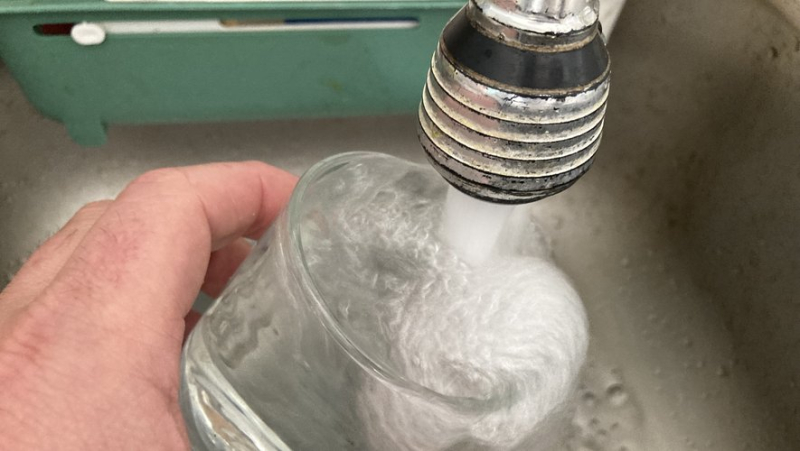In Frontignan, the quality of tap water is good but questions persist

L’eau du robinet contient trop de chlore. MIDI LIBRE – PHILIPPE MALRIC
Une association de Frontignan a, sur ses propres deniers, financé une expertise de l’eau du robinet par un laboratoire agréé.
This is the news. In recent weeks, the presence of the famous PFAS and other eternal pollutants in tap water (in particular) has fueled social debates. A debate in which, in Frontignan, the association of residents of the Prés Saint-Martin district and the Rhône canal in Sète wished to participate.
The origin of the requested water
The structure, chaired by Céline Laurens, first approached Véolia to find out the power source. As for the entire Thau basin, drinking water comes from the Florensac alluvial aquifer. "We then found on the Internet, the results of the analyzes of this water carried out by & nbsp;the Regional Health Agency. But there are only 18 parameters", she explains.
Three analyzes ordered
Thanks to the France nature environment network, the Muscatière association made contact with the laboratory, approved by the State, Phytocontrol in Nîmes. "He told us that&rsquo ;he could analyze Pfas but he could not rule on conformity, specifies Céline Laurens. But he offered us three analysis packs: the one on pesticides where he is looking for 550 molecules, the one on glyphosate and finally the one on heavy metals. .
Everything complies
The local residents' association therefore spent nearly 500 euros; to finance the three formulas. A specialized technician is therefore, on February 20, taking samples from the tap in Frontignan. Depending on the length of the analyses, the results arrived delayed. But they are all unanimous: everything complies with the legislation. There are of course infinitesimal traces of the molecules sought. But, all is well in this area.
Excessive presence of chlorine
Except. Except that according to the ARS's own analyses, there is too much chlorine in our tap water. The standard in France is 0.2 mg/liter. On February 28, the local water showed a level of 0.50 (more than double). And on the 29th, the level was 0.32 mg/liter. Still too high. The association has just sent a letter to the ARS to ask for its opinion on the excessive presence of this chlorine and its high level. At the same time, the association informed him of its desire to "know the results of other parameters" (that the 18 officially published, Editor's note) such as nitrates and nitrites, dioxins or even the famous Pfas. And thus bring grist to the mill of the debate of the moment.
I subscribe to read more




